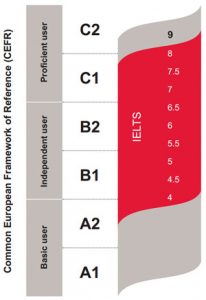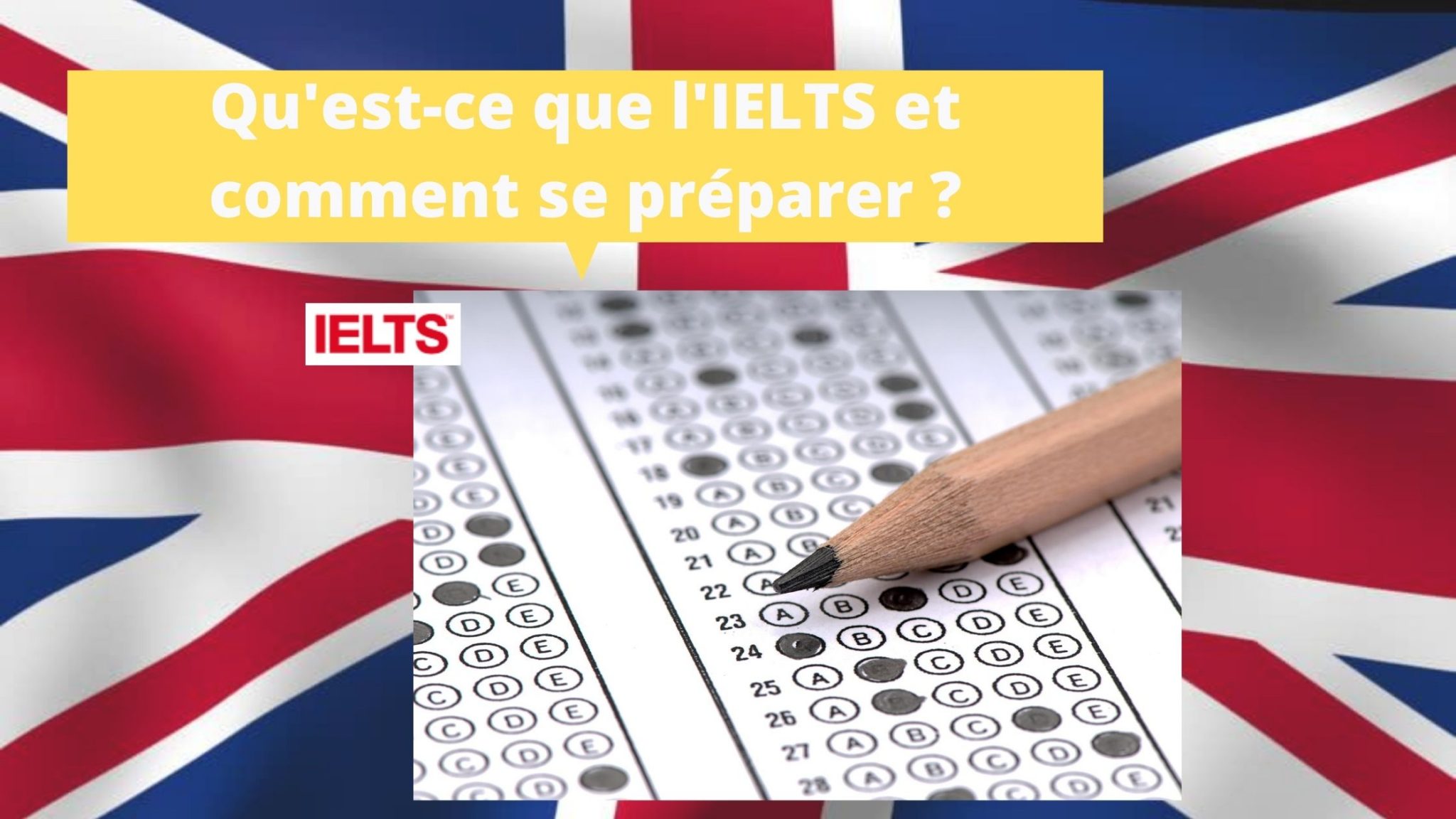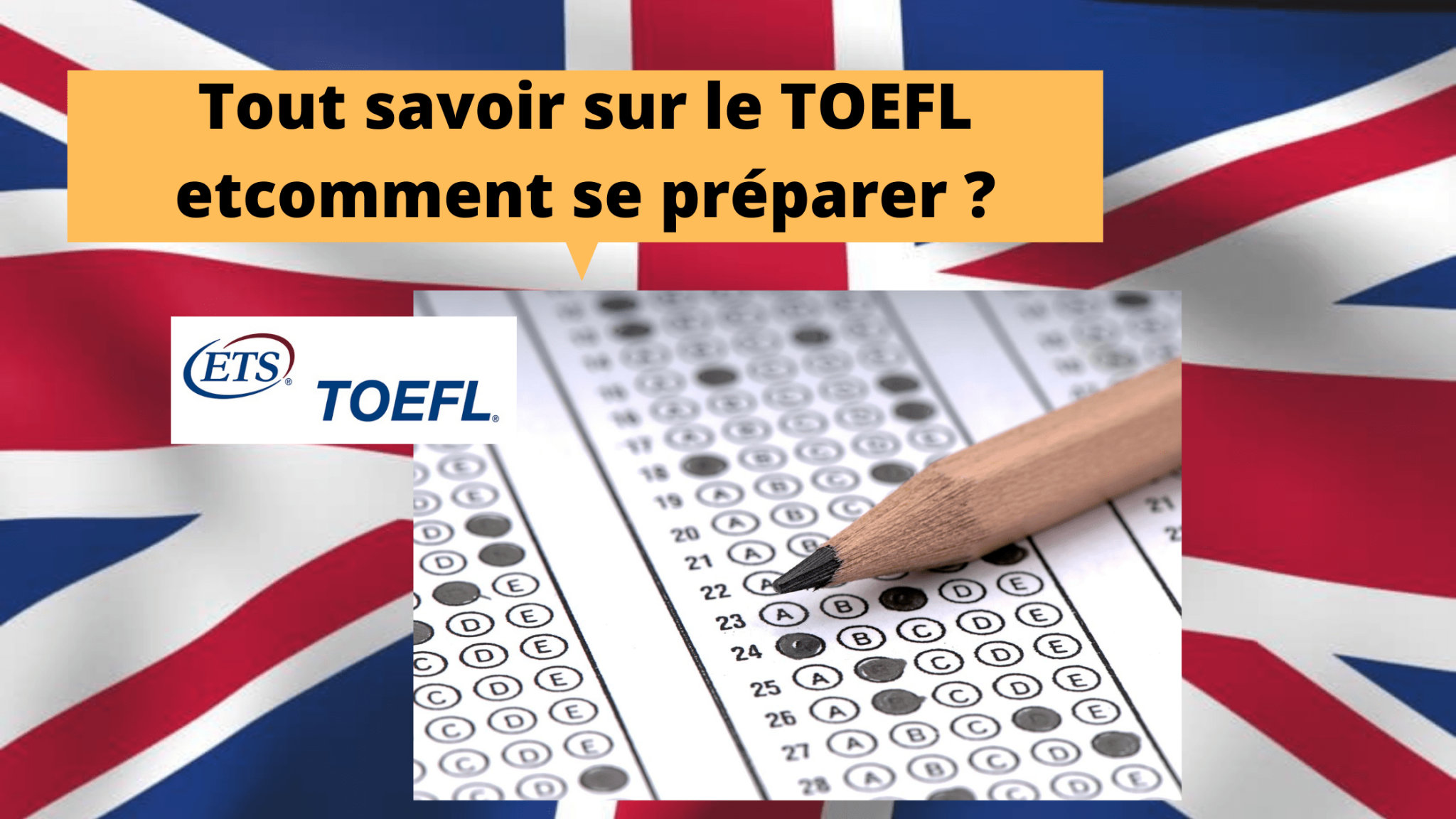IELTS (International English Language Testing System) is an exam that assesses the level of English against international standard criteria. In 2010, over 1.4 million students took the test in over 130 countries.
The main reason why so many people choose to take the IELTS exam is to obtain a certificate that proves their level of English in order to pursue university studies abroad, at both undergraduate and postgraduate levels. In some cases, it is also required for work purposes or even to prove that you have a sufficient level of English to obtain a residence permit in countries such as the United Kingdom, Canada, Australia or New Zealand.
There are two versions of IELTS: the academic version and the general version. On the one hand, the ‘IELTS Academic’ version, as its name suggests, is aimed at people who are going to start or continue their undergraduate or postgraduate studies in an English-speaking country (or university).
IELTS is currently the leading English language test and has grown exponentially in recent years to reach almost one and a half million candidates a year. The IELTS test assesses proficiency in English, without a preference for British or American English. In the United States, IELTS has been widely recognised as a viable alternative to the TOEFL test by over 2,000 universities and colleges, including all the famous Ivy League institutions.
It is strongly recommended that you take an English course to prepare for this exam, as it is not only necessary to have a good command of the language but also to understand how the exam is structured. This way you will be able to answer its different parts in less time. Thanks to Polytongue Academy, you can prepare for your exam with our teachers online or at home if you live in Paris or Lyon.
Structure of IELTS and how to prepare
IELTS consists of 4 parts: listening, reading, writing and speaking. The total duration of the test is 2 hours and 45 minutes, with the first three parts taking place one after the other. The oral part can take place on the same day, or on another day, with a maximum of 7 days before or after the other block. Don’t forget that at Polytongue Academy, our English courses specialising in preparation for official exams can help you pass this exam at the level you need!
Listening comprehension (Duration: 30 minutes)
Listening comprehension consists of 4 exercises, each based on an audio recording which may be a monologue or a conversation between 2 or more people. The exercises include multiple choice, fill-in-the-blank sentences, tables, graphs or diagrams, and a short answer in one or two sentences. In this part of the test, you should note that you can hear accents from anywhere in the world, which adds a significant degree of difficulty.
Reading - academic version (Time: 60 minutes)
This consists of 40 questions grouped into 3 sections. Each text is between one and two pages long and several questions are asked. The texts are actual extracts from books, research articles, newspapers and scientific journals. As in the oral part, the types of questions are very varied: multiple choice, completing tables, graphs or diagrams, locating information in the text, indicating the author’s opinion, etc.
Writing - academic version (Time: 60 minutes)
This part consists of two exercises, a 150-word essay and a 250-word essay. For the 150-word essay, a short report is generally required on the information provided to the candidate in whatever format (text, graph, table or diagram).
For the 250-word essay, the information is usually presented very briefly (a few lines), followed by a statement about the information, and then the candidate is asked to explain whether they agree or disagree with the statement, briefly setting out the necessary arguments. The second exercise takes up two thirds of the “Writing” mark and the first one one third.
Oral expression (Time: 11-14 minutes)
In this final part, a conversation takes place with an examiner, who tries to be as realistic as possible. It is divided into 3 sub-parts. In the first part, personal, family and/or everyday issues are discussed. In the second part, the candidate talks about a specific subject indicated by the examiner. In this case, the ability to produce a coherent and orderly discourse is valued. In the third and final question, both the examiner and the candidate hold a conversation on a specific topic, where oral interaction and discussion skills are valued. The entire “Speaking” part is recorded for potential review.
At Polytongue Academy, each of these sections is worked on in our classes, to enable our students to pass the exam and achieve a satisfactory result. We work on sample questions and simulate the exam.
Results, score and validity
The scoring system is called “by bands”. The markers will score our responses separately in different bands (from 0 to 9), according to their quality. A very good response would be placed in band 8, while a mediocre response, with serious but understandable grammatical errors, would be placed in band 5. Levels 1 to 4 are unlikely to be achieved, as candidates generally do not sit the exam if they do not expect to achieve at least a 5 or 5.5 (the minimum required to be able to follow a university-level course in English). A band 0 is only awarded when an exercise has been left blank, and a band 9 is only awarded to exercises that are completely perfect. At the end, a weighted average of all the bands obtained is made, which becomes the final score.
In IELTS, there is no pass or fail. IELTS will give us a score from 0 to 9, which will be the score we present to the university to which we have applied. Therefore, a pass or fail grade will be given if we do or do not achieve the minimum score required by the institution we are trying to get into. Even if we pass a good exam and get a high mark, for example a 7.5, if the university we are trying to get into asks for an 8, we will be eliminated. So it’s essential to know the minimum entry grade for the programme of study you’re trying to get into and to prepare thoroughly for the exam to get that grade. In fact, the question most frequently asked by academy teachers preparing for this type of exam is: “What score do you need? (What score do you need?).
The following chart, obtained from the official IELTS website, shows the equivalence of IELTS scores with the levels of the Common European Framework of Reference for Languages (CEFR).

Test results are available online 13 days after the test. They are sent by post in the form of a certificate to the candidate’s home address and to a maximum of 5 universities chosen by the candidate when registering for the test. Please note that the IELTS test certificate is valid for 2 years. After this period, it will expire and will not be accepted by any institution.
Venues and prices
In France, IELTS can be taken at the British Council in various cities, as well as at other approved test centres, including some universities and language schools. There is a British Council in almost every provincial capital, so it’s very convenient to take it, as you don’t have to travel long distances. Internationally, there are examination centres in over 140 countries. So, it’s not difficult to find a place and date near you to take the exam. Here you can view IELTS dates and locations worldwide by simply selecting the type of exam you want to take and the country where you want to take it.
The price of the IELTS exam is currently around 210 euros. Prices vary slightly from country to country, although in continental Europe they are fairly similar to those in France. However, the price difference is considerable when taking the exam in the UK, where it costs around £150, which at the current exchange rate is less than £170. It is therefore ideal to take it after a specific IELTS preparation course in the country, for example.





